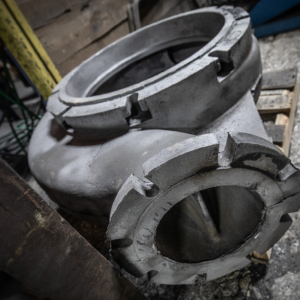Sand Casting Tolerances
Dimensional Sand Casting Tolerances
To assign dimensions and tolerances to a part, which is produced as a casting, involves consideration of functional requirements of the finished part, allowances for any machining operations, which may be involved in producing the finished part, and allowances for production requirements such as draft. Allowances for castings and the major tolerance considerations in the production of parts as steel castings are presented below. Along with this information a set of sand casting tolerance grades is introduced to facilitate communication on tolerances.
Draft Allowances
Draft is the angle, which must be allowed for on all vertical faces of a pattern to permit its removal from the sand mold without tearing the mold walls. The amount of draft depends upon the size of the casting, the method of production, and whether molding is performed by hand or machine. Machine molding will require a minimum amount of draft. Interior surfaces in green sand molds usually require more draft than exterior surfaces. The amount of draft recommended under normal conditions is about 3/16 in. per ft (approximately 1.5°). Draft can be eliminated in some cases through special molding techniques. These situations and the specific amount of draft required should be discussed with personnel of the foundry that will produce the casting.
Machining Allowances
Castings, which are to be machined, must have sufficient metal stock on all surfaces requiring machining. The necessary allowance, commonly called finish, depends upon the size and shape of the casting, the surface to be machined, the hardness of the steel, roughness of the casting surface, the tendency to warp, and the type of tooling used for machining.
Standards finish allowances for steel castings are difficult to formulate since each casting is unique. Allowances that would be acceptable for one casting may not be adequate for others. In general, allowances may vary from 3/16 in. to ¾ in., depending upon the variables listed above. Machining allowances should be discussed with personnel of the foundry that will supply the casting.
Variables Affecting Dimensional Tolerances
Dimensional tolerances are permissible deviations of the manufactured parts from the specified nominal dimensions. The magnitude of tolerances which can be met depends on several factors:
- Whether only one or a few castings are produces from a pattern, or whether the part is produced in large quantities.
- The design of the casting, and the dimension type.
- The pattern and core box equipment employed to produce molds and cores.
- The process employed for producing molds and cores.
- Casting weight and dimension length.
- Whether the castings are to be gaged and dimensionally upgraded as part of the finishing and inspection operation.
Casting Design and Cores
The design of castings, especially the complexity introduced by cored passages is another consideration in determining tolerances, which can be met. The accuracy and precision of cored passage dimensions may be limited by the ability to make cores which will resist bowing or sagging caused by their own size or shape and by the pressure of surrounding metal.
Dimension Type
Various dimension types depending on whether they are controlled by the mold alone, by a core only, or by combination of these, with and without the effect of the parting line.
Pattern and Core Box Equipment
Conformance of casting dimensions to design dimensions is determined, to a marked degree, by the pattern employed in producing the casting. The pattern is of paramount importance because it must be constructed with dimensions that compensate for the contraction of the steel in the mold. Also, the tolerances of castings produced from the same pattern by different foundries will usually not be identical. It is recommended that the foundry selected to make a particular casting also have control of pattern construction so that the experience of the foundry with regard to hindered contraction will help to minimize pattern alterations and their costs.
The expected length of the production run from a pattern is another consideration in choosing pattern materials. Dimensional variations from casting to casting within a lot will be greater for soft wood patterns than for metal patterns.
Mold Processes
Significant factors in determining the tolerance range, which can be held in a lot of castings, are the molding process and production techniques.
Molding equipment also affects dimensional tolerance capabilities. For instance, high pressure green sand molding produces harder molds, which resist mold wall movement more effectively. Tighter tolerances are thus possible for this type equipment. The apparent effect of equipment used is usually due to the casting weight because each of the equipment types tends to be selected for certain casting size and weight ranges.
Casting Weight and Dimension Length
The casting weight has a very significant effect on dimensional variations. Both the casting weight and the dimension length influence the process capability relative to dimensional tolerances in a nonlinear fashion.
Gaging and Dimensional Upgrading
The tolerances for dimensions of as-cast surfaces are a matter for agreement between the producer and consumer of the castings. However, to minimize the rejection of castings for dimensional reasons the tolerances selected should be comparable to the process capability for the particular set of operating conditions under consideration. Tolerances tighter than the process capability will necessitate that the casting be subject to special processing to upgrade the dimensional characteristics.
Sand Casting Tolerances For Production
The tolerances discussed in this section were developed from heat treated castings, which had not been gaged, and dimensionally upgraded.


 Sand Casting Foundry Menu
Sand Casting Foundry Menu